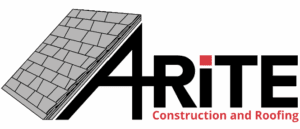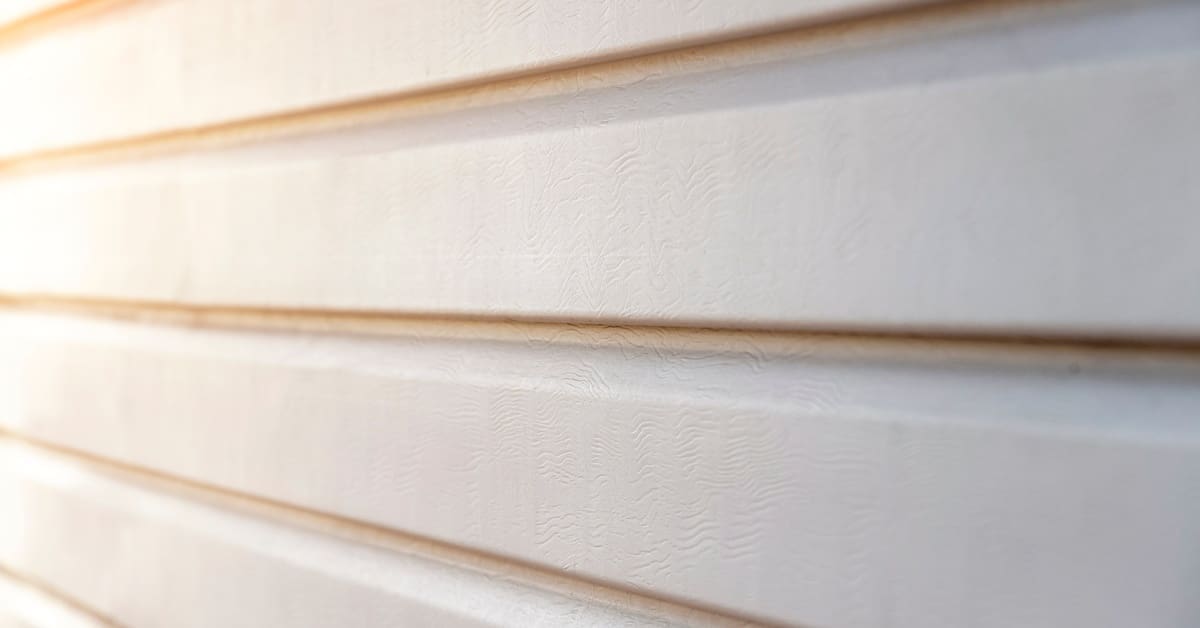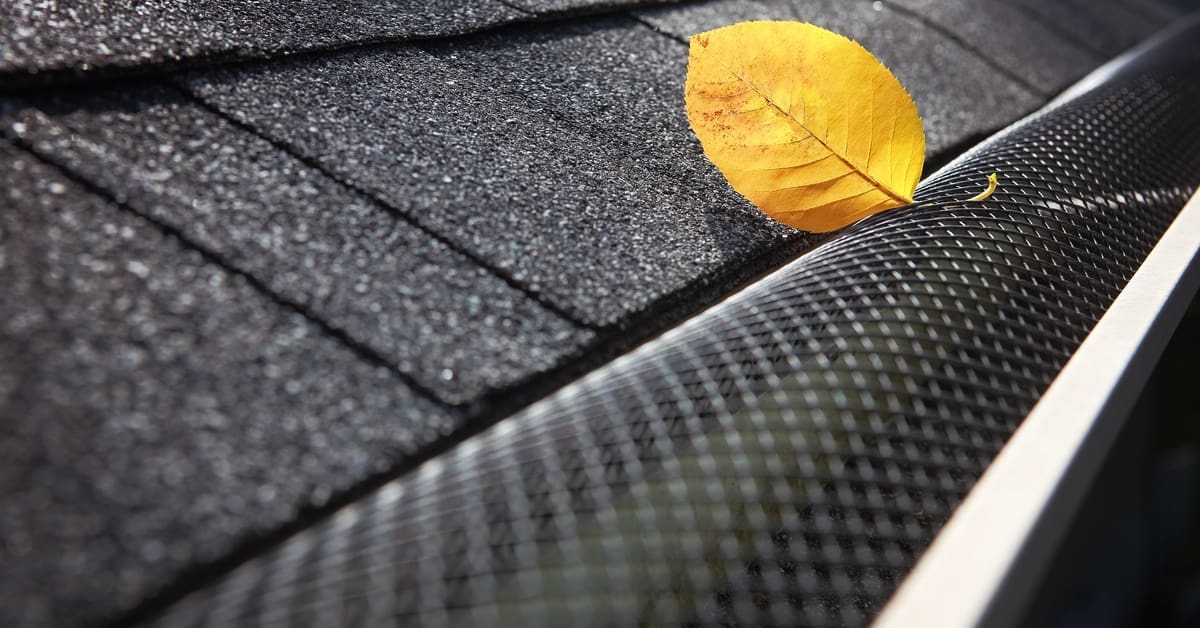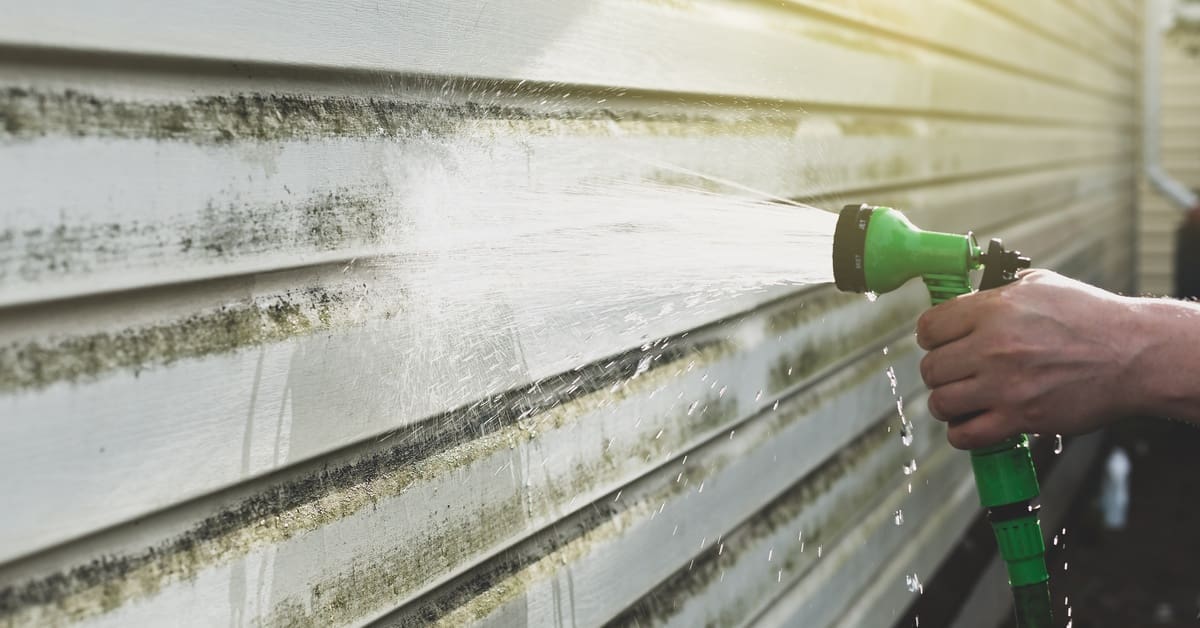Faded siding can dramatically age a home. While some fading over time is expected, uneven, rapid, or premature fading well before the product’s expected lifespan may indicate more than just a cosmetic issue. It could be a sign of premature material failure.
If you’re unsure how to tell if your siding is fading prematurely, let’s go over the most common signs that your siding may be deteriorating before its time.
Look for Uneven Color Loss
One of the clearest signs of premature fading is inconsistency in color across your siding. Instead of a uniform shift in tone, you may notice irregular patches or streaks that appear lighter than others. These faded spots often appear dull or bleached compared to the surrounding panels.
This type of patchy discoloration is rarely caused by natural aging. More often, it’s a red flag for issues such as substandard pigments, poor UV protection, or inconsistent manufacturing.
Quality siding is engineered to fade gradually and evenly over time. When siding changes color in a blotchy or irregular way, it’s worth investigating further.
Compare Sun-Exposed Areas
Sunlight, particularly UV radiation, plays a considerable role in the lifespan of exterior siding. However, siding made with UV-resistant materials or coatings should withstand years of sun exposure with minimal fading.
A straightforward diagnostic step is to compare areas that receive consistent sunlight with those that remain mostly shaded, such as those under eaves or behind landscaping. Panels in full sun that appear significantly lighter or more washed out than those in the shade may indicate premature material fading.
Normal siding may shift slightly in color over time, but if the contrast is stark, especially within the first 5 to 10 years of installation, that’s cause for concern. Darker-colored siding is a more significant issue, as it tends to absorb more heat and degrade more quickly without proper UV protection.
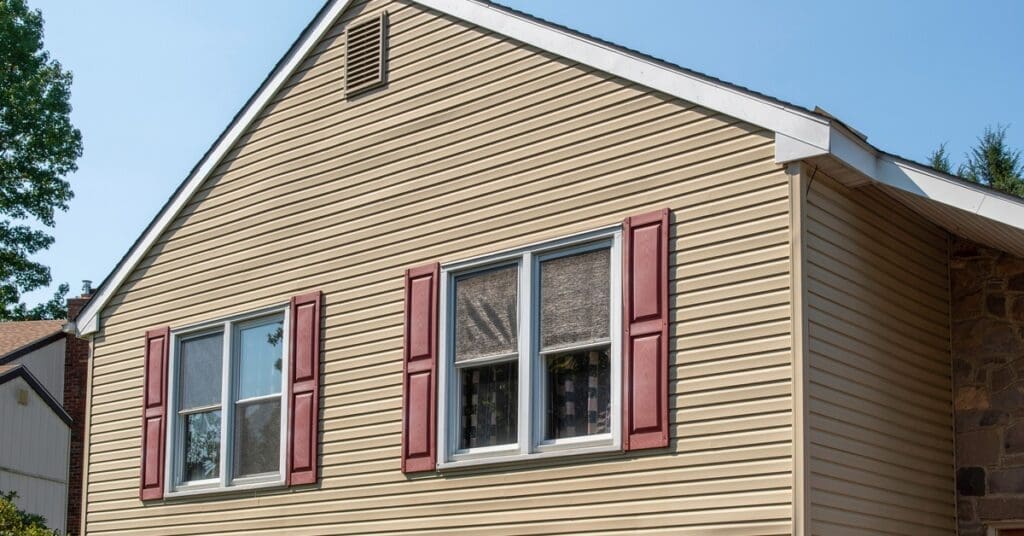
Check for Chalky Residue
Vinyl and aluminum siding should maintain a clean, smooth surface under normal conditions. If you run your hand across a panel and come away with a chalky white residue, you’re seeing the effects of oxidation.
This powdery film is a sign that the siding’s surface coating is breaking down due to exposure to UV radiation or chemical weathering. Not only does this residue dull the appearance of your home, but it also indicates that the material is losing its protective barrier.
Once this layer starts to fail, the siding becomes more susceptible to cracking, discoloration, and other forms of damage. In short, that chalky residue indicates a breakdown in performance and durability.
Inspect for Color Matching Issues
Another way to spot early fading is by examining any areas of your siding that have been recently repaired or replaced. When the new sections stand out noticeably against the old, despite being the same style and color, it may not be because the installer chose the wrong match. More likely, it’s because the original siding has faded beyond what would normally be expected.
You can also observe color mismatches when you remove or shift an object that has been covering part of the siding, such as a hose reel, planter box, or light fixture. The material behind the object will often reveal the original, more vibrant color, making any fading on the exposed portions far more noticeable.
These visual clues are subtle but meaningful signs that your siding may not be living up to its intended lifespan.
Note Fading on Darker Colors
As mentioned, dark-colored siding is more susceptible to fading. Darker shades generally absorb more heat than lighter tones, which accelerates surface degradation, unless the material is specially treated to reflect UV rays.
Keep a close eye on home features with deep hues like navy, forest green, or charcoal. Subtle changes in richness or tone can indicate premature fading. Not all dark siding is vulnerable, but if fading begins within the first few years, it may suggest that the product lacks adequate UV protection.
Watch for Surface Dulling
Fading isn’t always about color change. In many cases, the siding’s sheen or texture will degrade first. Vinyl and aluminum siding often have a slight gloss when first installed. As the protective outer layer wears down, that sheen begins to flatten, giving the siding a noticeably dull appearance.
This surface change can make any siding look tired or worn. Dulling may also suggest that the material is starting to break down structurally, as it typically occurs in conjunction with UV and weather exposure. If your siding looks “matte” or faded in texture, it’s likely not holding up as well as it should.

Look for Warping or Bubbling
Premature fading often doesn’t appear alone; it’s commonly associated with heat-related issues such as warping or bubbling. Physical distortions occur when siding expands unevenly under high temperatures. Poor UV resistance, dark colors, or improper installation can all increase the likelihood of this issue.
Warped siding can allow moisture to enter or air to leak, both of which can lead to more serious structural and energy-efficiency problems. Combined with fading, warping is a strong indicator that your siding is underperforming or was not designed for your climate.
Pay Attention to Age
All siding fades eventually, but high-quality materials are engineered to last. For example, vinyl siding should retain its color and finish for 20 to 40 years, depending on the climate, color, and level of maintenance. Premature fading typically occurs within the first 10 to 15 years and may be a sign of material or installation issues.
Siding that appears worn well before reaching that range—even if it’s just slightly dulled—is worth investigating. Some homeowners may dismiss this change as normal weathering, but fading ahead of schedule can indicate future problems, such as cracking, insulation loss, or surface brittleness.
Consider Long-Term Performance
Knowing how to tell if your siding is fading prematurely can help you spot issues early, before they escalate into costly repairs. Fading may be one of the first signs that your siding is no longer offering full protection against UV rays, moisture, or energy loss.
For Wausau, Wisconsin, homeowners ready to upgrade, A-Rite Construction offers high-performance vinyl and aluminum siding solutions backed by decades of experience. Our residential siding contractors use premium materials from Mastic and Norandex, both of which feature UV-reflective technologies designed to resist fading.
With certifications from the Vinyl Siding Institute and top industry manufacturers, A-Rite Construction is a trusted source for siding installations that last.
